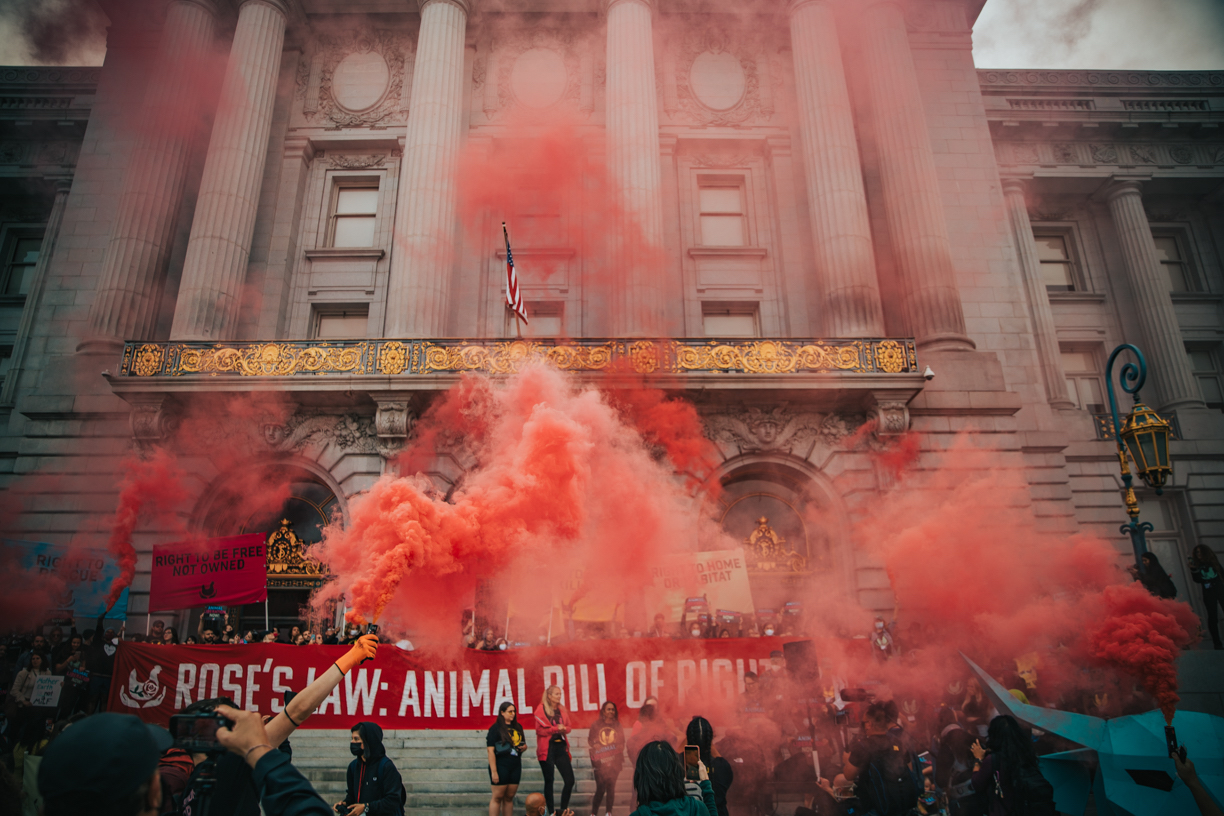Respecting Gender Identity
By Pax Ahimsa Gethen

Want a sure way to “dehumanize” (and likely infuriate) a person? Call them “it.” “It” is for rocks and cars and paper clips— not people.
One of the first concepts I learned when getting involved in animal rights advocacy is that our fellow animals are people too, and they also deserve gendered pronouns, such as “she” and “he.” So instead of referring to “dehumanizing,” let’s talk about avoiding “objectifying.” Animals— whether they are birds, humans, insects, cattle, or otherwise— are someones, not somethings.
Why should we care about what pronouns to use for nonhuman animals, when they cannot read or understand the syntax of our human languages? Because using “she” or “he” instead of “it” reminds us that everyone is worthy of respect. The same goes for humans who request to be referred to with different pronouns than you might expect.

If a transgender friend who you used to call “he” now goes by “she,” practice referring to her by that pronoun when she isn’t around. Remember that most of the time when you refer to someone in the third person, they aren’t around to hear it. Even if they are present and you misgender them, they might not correct you out of fatigue, fear, or for any number of other reasons.

Don’t slip back into using a person’s previous or non-preferred pronouns just because they’re out of earshot. Doing so erases their gender identity. This is also important for those (like myself) who request non-binary pronouns such as “singular they,” which is becoming increasingly widespread in the US; even Facebook now allows it for those who specify a “custom” gender.
As you can see in multiple examples in this post, “they” is frequently used to refer to people of unknown gender. Using “they” to refer to a known person, by their request, is not ungrammatical, despite what the grammar police might tell you. But the only way non-binary pronouns will gain wider acceptance is if more people use them consistently, and without complaining.
What if you don’t know the gender of a non-human animal? I prefer to use “they,” just as I would for a human; but others prefer “she” or “he.” I don’t think there’s a right answer here, as long as “it” is avoided. The only exception would be for a human who specifically requests “it” as a pronoun; such people exist, but are rare.


Misgendering always hurts. To a transgender person, the effect can feel like a pinprick or a punch in the face, depending on any number of factors. Misgendering can also be dangerous or even lethal in certain situations, such as outing a trans woman in a hostile environment. In many locations, a trans woman using a women’s restroom or locker room could be at danger of violent confrontation from security guards or police if her trans status is revealed.
To an individual nonhuman animal, the effect of misgendering might not seem immediate or important; but the problem is pervasive. Degendering and objectifying makes it easy to see animals as machines or toys that provide products and entertainment for humans. Taking the time to learn the gender and, where relevant, name of an animal is one way to show that everyone is an individual worthy of respect. Regardless of species or sex, all of us have value, and all of us deserve to live.
Author Pax Ahimsa Gethen will be delivering a lecture on respectful pronoun use at DxE House in Oakland this Saturday, December 13th, at 1pm.
Other articles

Tulare County Dairy Farms Are Poisoning Latino Communities

The Case for Systemic Change




